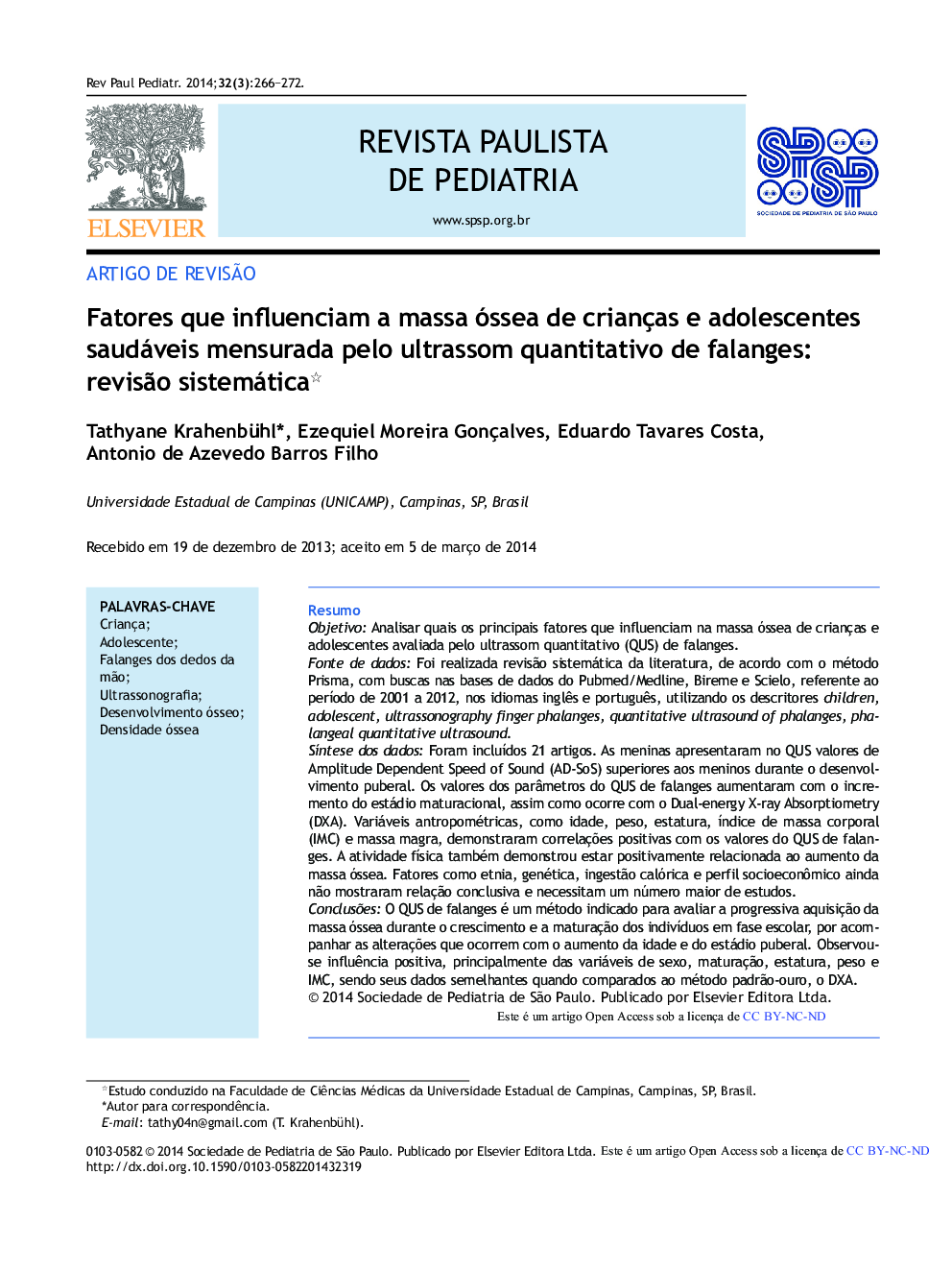| کد مقاله | کد نشریه | سال انتشار | مقاله انگلیسی | نسخه تمام متن |
|---|---|---|---|---|
| 4176054 | 1276231 | 2014 | 7 صفحه PDF | دانلود رایگان |
ResumoObjetivoAnalisar quais os principais fatores que influenciam na massa óssea de crianças e adolescentes avaliada pelo ultrassom quantitativo (QUS) de falanges.Fonte de dadosFoi realizada revisão sistemática da literatura, de acordo com o método Prisma, com buscas nas bases de dados do Pubmed/Medline, Bireme e Scielo, referente ao período de 2001 a 2012, nos idiomas inglês e português, utilizando os descritores children, adolescent, ultrassonography finger phalanges, quantitative ultrasound of phalanges, phalangeal quantitative ultrasound.Síntese dos dadosForam incluídos 21 artigos. As meninas apresentaram no QUS valores de Amplitude Dependent Speed of Sound (AD-SoS) superiores aos meninos durante o desenvolvimento puberal. Os valores dos parâmetros do QUS de falanges aumentaram com o incremento do estádio maturacional, assim como ocorre com o Dual-energy X-ray Absorptiometry (DXA). Variáveis antropométricas, como idade, peso, estatura, índice de massa corporal (IMC) e massa magra, demonstraram correlações positivas com os valores do QUS de falanges. A atividade física também demonstrou estar positivamente relacionada ao aumento da massa óssea. Fatores como etnia, genética, ingestão calórica e perfil socioeconômico ainda não mostraram relação conclusiva e necessitam um número maior de estudos.ConclusõesO QUS de falanges é um método indicado para avaliar a progressiva aquisição da massa óssea durante o crescimento e a maturação dos indivíduos em fase escolar, por acompanhar as alterações que ocorrem com o aumento da idade e do estádio puberal. Observou-se influência positiva, principalmente das variáveis de sexo, maturação, estatura, peso e IMC, sendo seus dados semelhantes quando comparados ao método padrão-ouro, o DXA.
ObjectiveTo analyze the main factors that influence bone mass in children and teenagers assessed by quantitative ultrasound (QUS) of the phalanges.Data sourceA systematic literature review was performed according to the PRISMA method with searches in databases Pubmed/Medline, SciELO and Bireme for the period 2001–2012, in English and Portuguese languages, using the keywords: children, teenagers, adolescent, ultrasound finger phalanges, quantitative ultrasound of phalanges, phalangeal quantitative ultrasound.Data synthesis21 articles were included. Girls had, in QUS, Amplitude Dependent Speed of Sound (AD-SoS) values higher than boys during pubertal development. The values of the parameters of QUS of the phalanges and dual-energy X-ray Absorptiometry (DXA) increased with the increase of the maturational stage. Anthropometric variables such as age, weight, height, body mass index (BMI), lean mass showed positive correlations with the values of QUS of the phalanges. Physical activity has also been shown to be positively associated with increased bone mass. Factors such as ethnicity, genetics, caloric intake and socioeconomic profile have not yet shown a conclusive relationship and need a larger number of studies.ConclusionsQUS of the phalanges is a method used to evaluate the progressive acquisition of bone mass during growth and maturation of individuals in school phase, by monitoring changes that occur with increasing age and pubertal stage. There were mainly positive influences in variables of sex, maturity, height, weight and BMI, with similar data when compared to the gold standard method, the DXA.
Journal: Revista Paulista de Pediatria - Volume 32, Issue 3, September 2014, Pages 266–272
